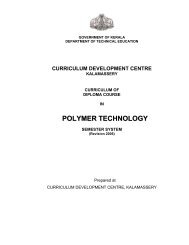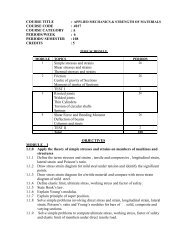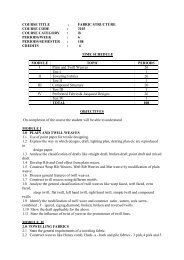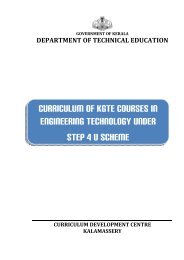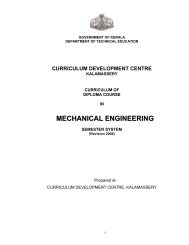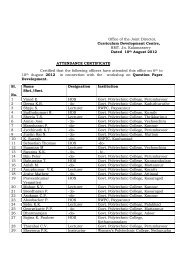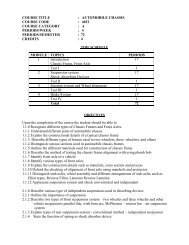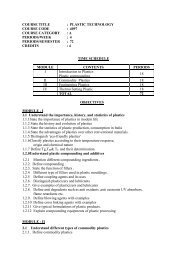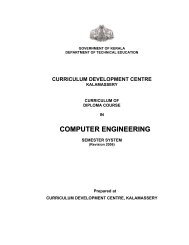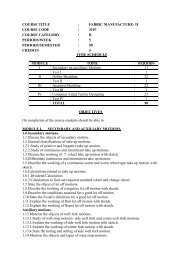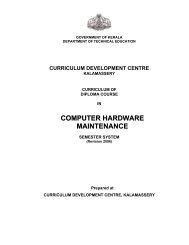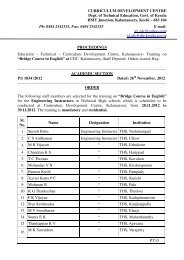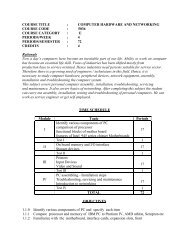13 - Curriculum Development Centre, Kalamassery
13 - Curriculum Development Centre, Kalamassery
13 - Curriculum Development Centre, Kalamassery
- No tags were found...
Create successful ePaper yourself
Turn your PDF publications into a flip-book with our unique Google optimized e-Paper software.
SUBJECT TITLE: AC MACHINES-2SUBJECT CODE : EE 601PERIODS/WEEK : 5+1PERIODS/SEMESTER : 80 + 16TIME SCHEDULEUNIT TOPIC PERIODSI Synchronous Generator 15II Characteristics and parallel operation of Alternator 15Test – I 2III Synchronous motor 15Test-II 2IV Single phase induction motor 15V FHP Motors 15Test - III 1Total 80OBJECTIVESUNIT – I1.1.0. Know the Working of Synchronous Generator1.1.1. Understand the constructional details of synchronous generator.1.1.2. Name the materials used for various parts.1.1.3. State the merits and demerits of salient pole and non-salient pole type of rotor1.1.4. Sketch various parts of synchronous generator.1.1.5. Understand various methods of excitation1.1.6. Know the classification of 3 phase windings, winding terminology1.1.7. Define chording factor and distribution factor and derive equations for the same.1.1.8. Derive the e.m.f equation for alternator1.1.9. Effects of harmonics on pitch and distribution factor1.1.10. Solve problems and compute generated e.m.f.UNIT – II2.1.0. Characteristics and parallel operation of Alternator2.1.1. Study the effect of load on alternator2.1.2. Armature reaction2.1.3. Study the effect of armature reactance and leakage reactance of alternators on load2.1.4. Draw the vector diagrams of alternator on load under different power factors2.1.5. Define voltage regulation of alternators.2.1.6. Compute voltage regulation by EMF, MMF, and ZPF methods2.1.7. Understand the necessity of cooling of alternators.2.1.8. Enlist the advantages and disadvantages of Hydrogen cooling over air cooling2.1.9. Understand the necessity of parallel operation of alternators2.1.10. Explain the synchronization of alternators with infinite bus bars usinga) Bright lamp method b) Dark lamp method and c) Synchroscope methodb) Derive expression for synchronizing current, torque and power from the vectordiagram147



